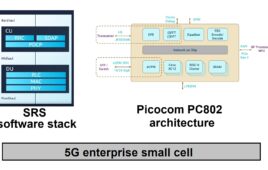At its meeting in Croatia last week, 3GPP agreed to add an intermediate milestone to its planned 5G New Radio release, bumping up its timeline for non-standalone configuration specs by six months. But while that news grabbed all the headlines, 3GPP also locked in a number of new study items that could potentially lay the groundwork for Release 16 down the line.
In a conversation with Wireless Week on Wednesday, Qualcomm’s Director of Technical Marketing Matt Branda confirmed 3GPP settled on several new study items for Release 15. These, he said, include an item on the use of unlicensed spectrum for 5G NR, non-orthogonal multiple access, non-terrestrial networks, and integrated access in backhaul. (See items 170828, 170829, 170717, and 170831 here.)
In its study of unlicensed spectrum for 5G NR, Branda said 3GPP will focus on a range of technologies, including the 5G versions of License Assisted Access and standalone access via technology like MulteFire. The analysis will examine spectrum both in the sub-6 GHz range, but also in millimeter wave frequencies, such as the 60 GHz and above spectrum recently opened up by the FCC.
Branda said Qualcomm is particularly interested in the study on unlicensed spectrum for 5G – and, in fact, is part of the team leading the study – because of its heavy involvement in 4G unlicensed technologies like LTE-U and MulteFire.
“It’s good to see (the focus on unlicensed),” Branda said. “We’ve talked about not just unlicensed spectrum, but spectrum sharing as well. So I see this as just the beginning of unlicensed and shared spectrum in a 5G world.”
Additionally, 3GPP will dive into non-orthogonal multiple access to look at how to implement non-scheduled access to the network for uplinks. Branda said this topic is particularly important as it relates to low-power Internet of Things (IoT) devices. Ideally, he said, these devices would be able to wake, transmit their data load, and immediately go back to sleep to save as much energy as possible. Currently, though, these devices must wait to be scheduled after they wake, taking up both power on device end and signaling overhead on the network side – an issue that would be severely exacerbated by the massive IoT deployments expected in the future. Branda said non-orthogonal multiple access could also be useful for mission critical applications, which need to send their message as soon as possible rather than waiting to be scheduled.
3GPP’s third study item on non-terrestrial networks will look at ways to use NR radio access technology for satellite communications, including channel modeling. This, Branda said, could particularly be used to help enable internet access in underserved areas.
And finally, the standards body will investigate integrated access in backhaul, with a focus on the millimeter wave bands. Branda explained the perspective here as centered on dividing up the larger channels found in millimeter wave bands to deliver both access and backhaul to small cell sites.
Historically, several items on 3GPP’s study lists eventually make it to the work item list for subsequent releases, making the group’s focus on these items notable. However, Branda stressed there’s no guarantee any of these study items will be a part of Release 16.
In case you’re wondering, though, 3GPP is expected to hunker down on Release 16 work items in mid-2018 (after its Release 15 comes out), with a target completion date at the end of 2019. Deployments of technology in Release 16 could follow as soon as 2021.



